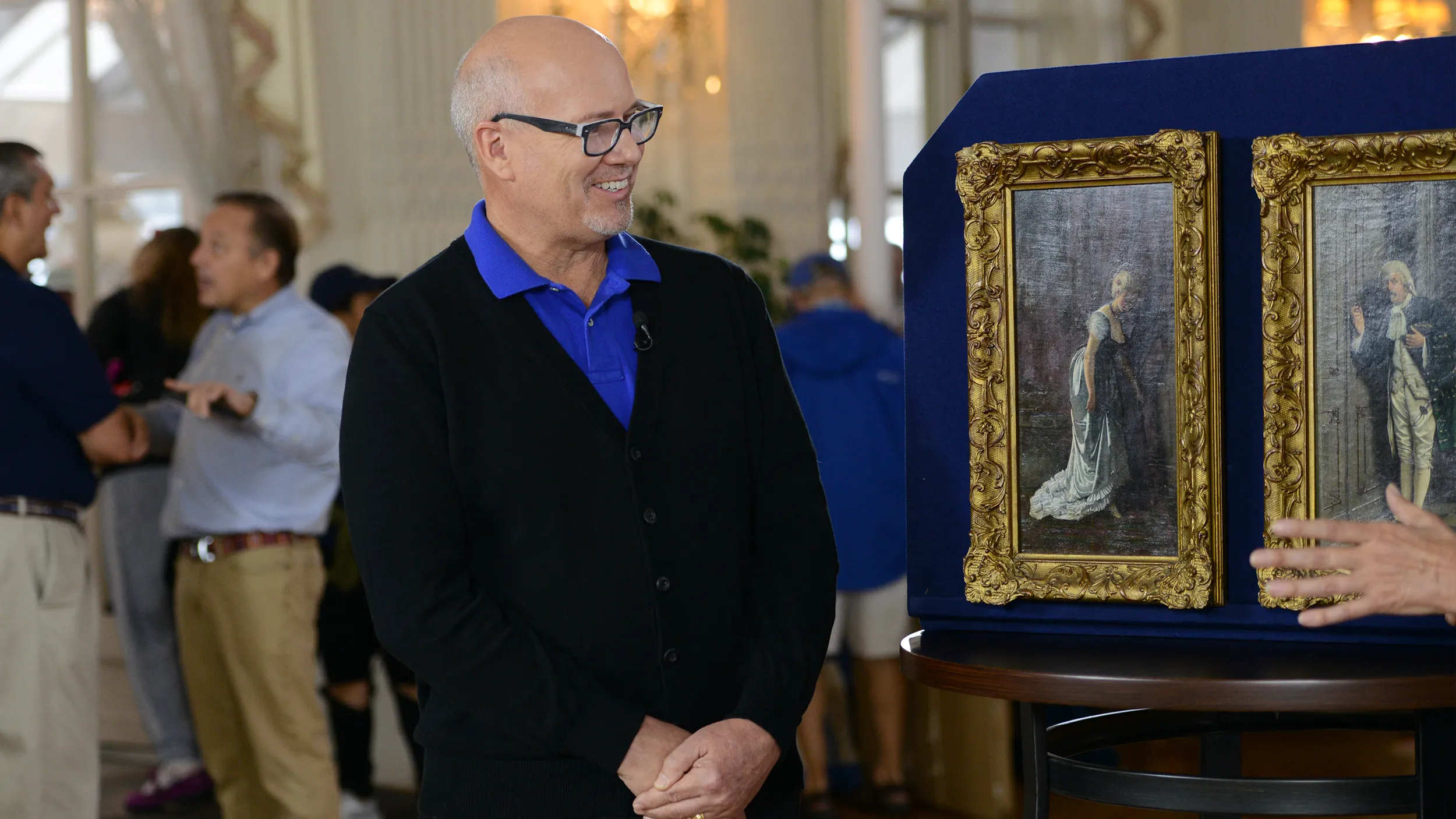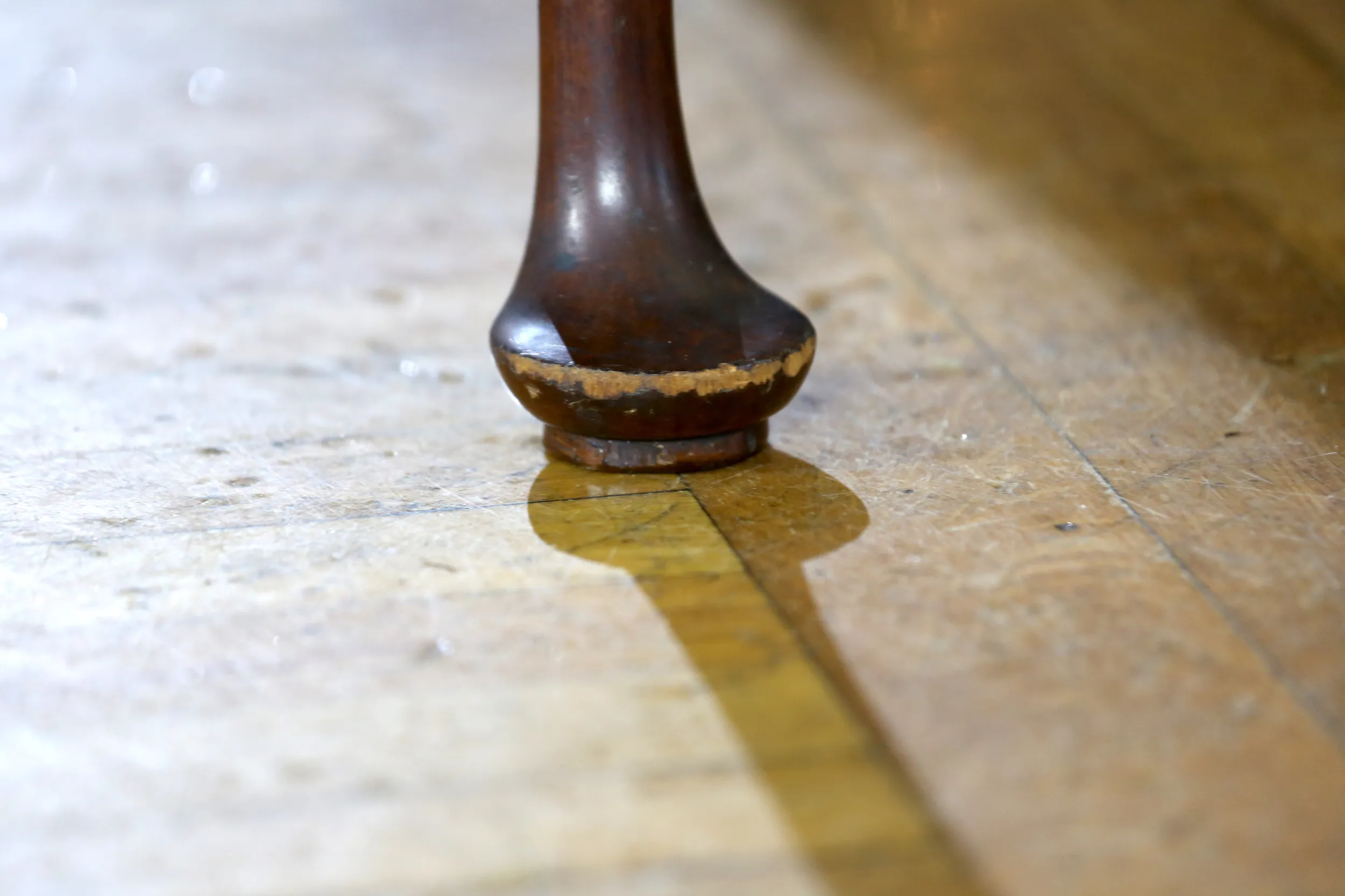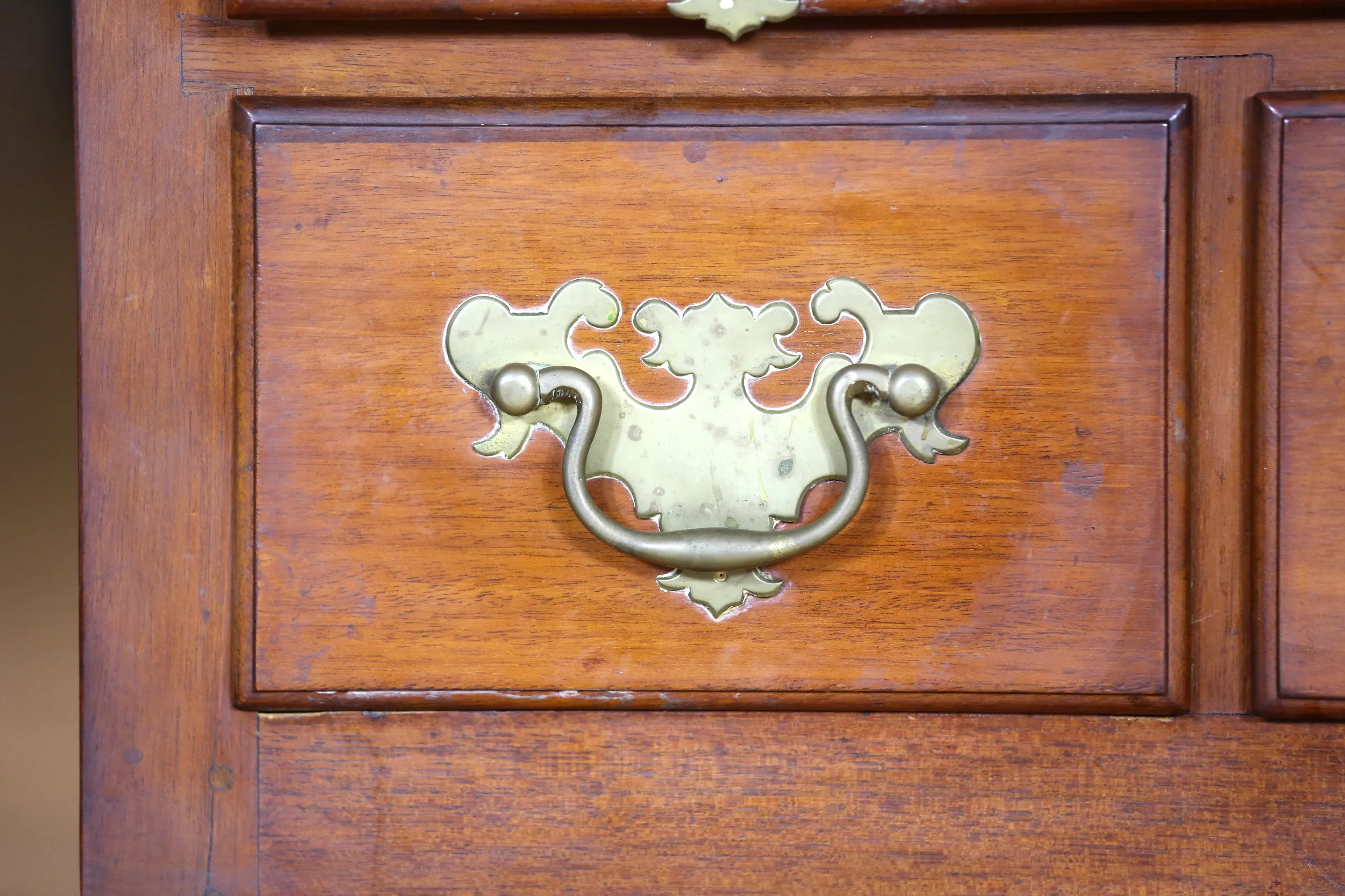GUEST: I found it last fall in a local antiques store. I went to visit it almost every weekend for... for a month, and it was meant to be mine, you know. I absolutely love the piece.
APPRAISER: I mean, this piece of furniture dates from probably 1760, '70. It's made of mahogany, as you know. This has the earmarks of a Queen Anne dressing table of good quality. They went to the trouble of molding the edge of the top.
GUEST: Mm-hmm.
APPRAISER: The top has a little bit of overhang, which gives it more grace. The drawers are thumb-molded, and that's typical of that period. And thumb molding is this, is this molded edge. The central drawer has a well-executed carved fan, and that cost extra money. These legs are well-formed, in pad feet on platforms. And a pad foot on a platform, again, cost a little bit of extra. The top edges of the drawer sides are double-beaded.
GUEST: Mm-hmm.
APPRAISER: That's a sign of a good cabinetmaker. He didn't have to do it, but it finishes it off nicely. And there's this... on the bottom of the drawer, there's this terrific oxidation. But you can see the center of the drawer, which runs on a central support underneath. You know, the oxidation is considerably worn away. These are things that we want to see. I think the origin of this piece, probably the North Shore of Massachusetts, in the Salem area. I've seen similar dressing tables and high chests that have very much the same treatment of a valance.
GUEST: Mm-hmm, okay.
APPRAISER: So at the time that you purchased it, what did it cost?
GUEST: I ended up paying $8,500 for it.
APPRAISER: Okay. Do you think you got a bargain? What do you think it's worth?
GUEST: I feel I got a bargain.
APPRAISER: Yeah.
GUEST: I was told that... Well, that the family might have had it appraised some time in the early '90s, and the appraisal came in rather high.
APPRAISER: How high?
GUEST: $30,000.
APPRAISER: $30,000 This is what's happened to the American furniture market. A) You're buying at a really good time.
GUEST: Mm-hmm.
APPRAISER: Because as wonderful as this piece is, it isn't worth particularly more than you paid for it.
GUEST: Mm-hmm.
APPRAISER: So you paid around $8,500.
GUEST: Mm-hmm.
APPRAISER: I think that's kind of on the money. In an auction situation, for example, I would not be surprised if it brought $8,500. I think, I think, um... I think that's realistic.
GUEST: Yeah? Okay. Well, to me it's worth a million, so... And I absolutely love it, and, um... I'll pass it on to my son.
APPRAISER: It's money well spent. The thing that prevents it perhaps from being a little more valuable is that the brasses are old, but they're not original. They've been replaced.
GUEST: Really?
APPRAISER: And also the quality of the mahogany, as good as it is, is not spectacular. Today's market is not supported by a lot of young folks. The fact that you're interested in this is a really good thing. But that's what's lacking. Competition for these pieces today is just not what it used to be 25 years ago. 25 years ago, when the market was up, you know, $35,000-- that's what I would have gotten for this.










